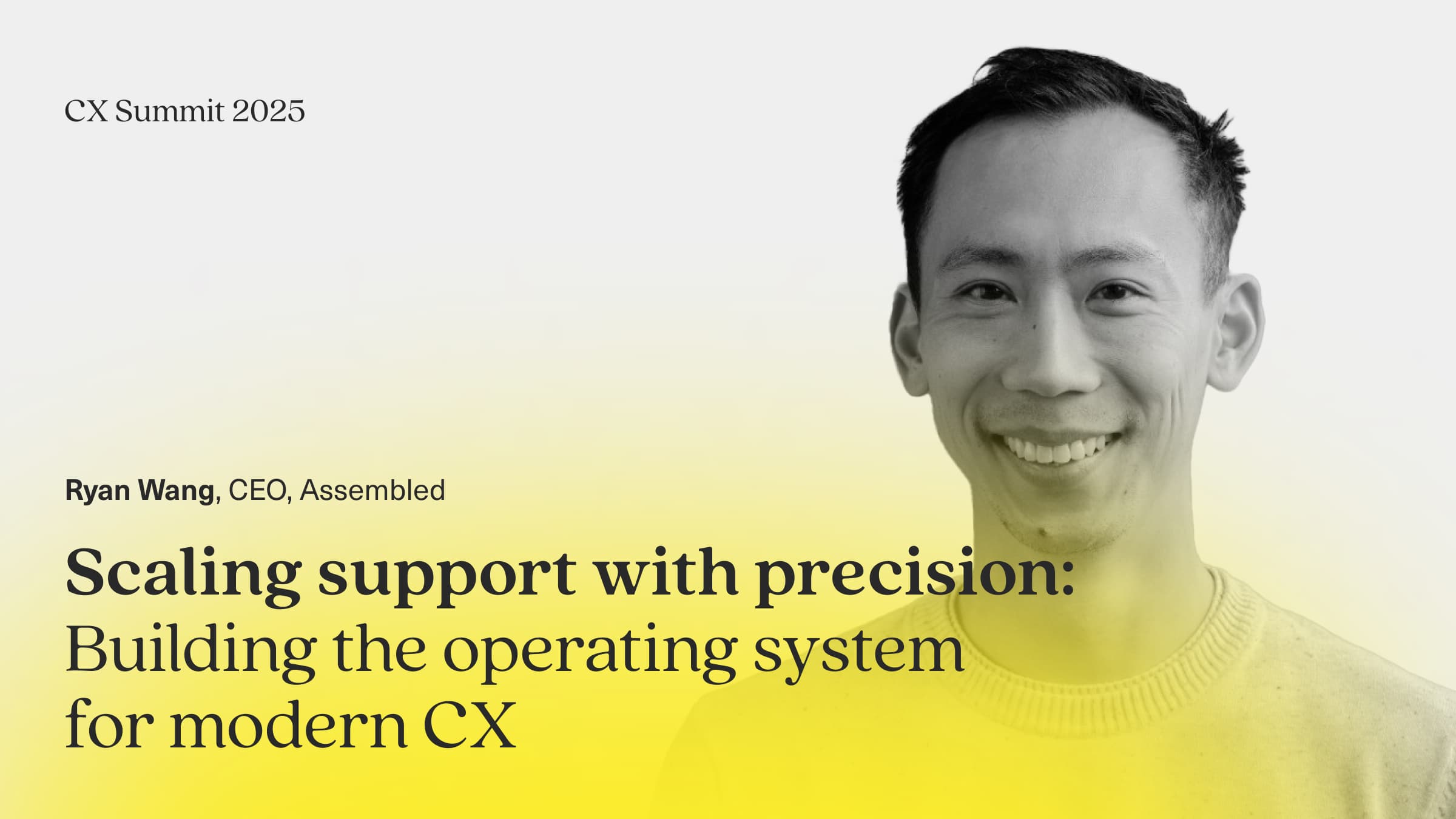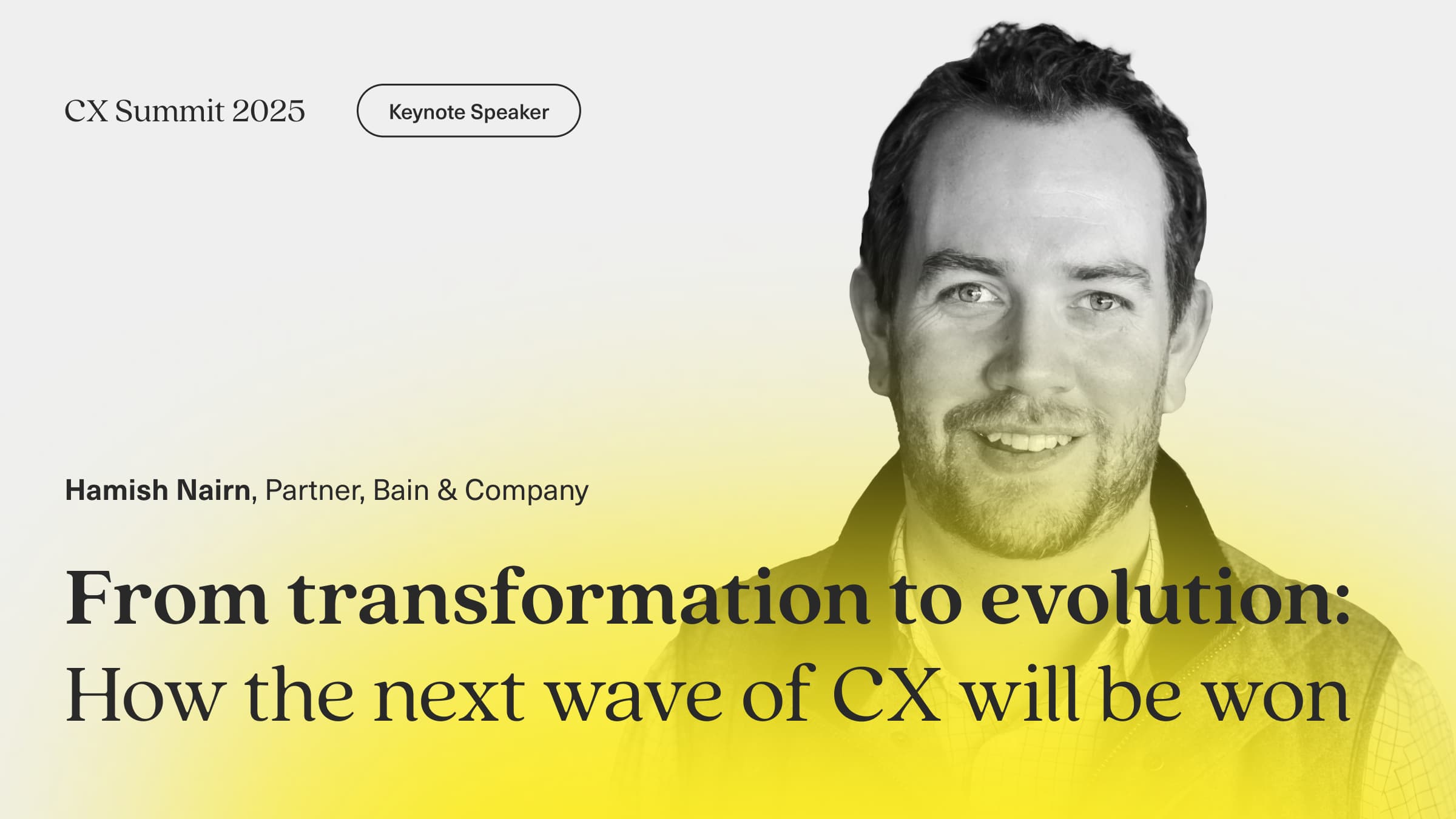Ryan Wang, Co-founder and CEO at Assembled, brings deep hands-on experience to the evolving world of customer support. From writing code to scaling support at Stripe, Ryan has seen firsthand what it takes to grow from startup to enterprise. At Assembled, he leads a platform trusted by companies like Robinhood, Brooks, and Ashley Furniture to automate 70% of support interactions and streamline workforce operations—delivering what he calls “superhuman support” through AI-powered scale and smarter systems.
Check out what he has to say about scaling support:
This interview has been edited for clarity.
Gabe Larsen: You work across a lot of different areas, but I really like this idea of customer support operations. It feels like it's at a bit of a crossroads with AI and emerging technologies. What do you think are some of the fundamental shifts in how companies are approaching support operations?
Ryan Wang: I talk to a lot of support leaders, and it is constantly evolving. Right now, I am hearing a lot of, “We need to do more with the same.” One customer told me their top line is growing 30%, and the volume of support contacts is expected to grow 30% as well. But the CFO said, “Here is your budget for the year—no net new headcount.” You just have to make it work.
So AI is definitely part of the conversation, especially around automation. But it is not the whole story. If you break support into tier one, tier two, and tier three, you can start to see where AI fits. In tier one, maybe 70 or 80% of inquiries can be automated. In tier two, it is about AI copilots making agents more effective. And tier three is where you start to see concierge-level service—support as a retention engine and a revenue driver. The best companies are treating support as an opportunity to enhance customer happiness and drive upsell and cross-sell.
Gabe: That is a great framework. Let’s talk about AI a bit more. Some companies are going all-in, while others are hesitant. Where do you see this heading in the next few years?
Ryan: I asked a customer of ours who is a founder, CTO, and now president of a global EOR platform the same thing. His view was this: in tier one, about 70% of the volume could be automated. Maybe more or less depending on complexity. But for the remaining 30%, his business is too nuanced. Customers are asking about employment laws in Germany or setting up businesses in Australia. He said, “I do not want to trust AI with that. I want a specialist who is well-trained to handle it.”
For tier two, he wants copilots that help agents be more productive. Training is still slow—it can take eight weeks or more. Copilots can help close that gap. And tier three is where specialists live. You want to be really intentional about how to deploy their time so they drive maximum business impact.
So, yes, the hype around AI replacing everyone is fading. The real conversation now is more nuanced—about how to elevate humans, not replace them.
Gabe: I had a conversation recently where someone said, “If AI is just going to handle tier one questions like 'Where’s my order?', I already have a decent chatbot. Why all the hype?” What is your take on moving from a rules-based chatbot to generative AI? Why switch?
Ryan: That is a fair question. Honestly, a lot of this is more iterative than people think. We have been here before—AI, big data, machine learning—it has cycled over the years. And tools like LivePerson have been pushing conversational AI for a while now.
But there are real advances today, especially in what large language models (LLMs) can do. Voice bots, for example, have made a huge leap. I recently tested one and had a full, natural conversation. The voice was realistic, the response time was fast, and the breadth of knowledge was impressive.
These tools are not yet turnkey—you need to stitch them together and make them production-ready—but the capabilities are now strong enough to rethink your entire channel strategy. If AI can work across chat, email, and voice at the same level, it stops being about individual channels and becomes one seamless customer experience.
Gabe: Yes, voice bots are starting to feel very real. Let’s shift gears. A lot of CX leaders are hearing phrases like "operational excellence" and "efficiency," but those terms can be vague. How do you define operational excellence?
Ryan: Great question. One story I heard recently stuck with me. A director of workforce management at a large delivery company was in a meeting with the CEO and COO. They asked, “How do we know we’re actually solving our customers' problems at scale?”
He pulled up an example where a customer had an $800 order canceled over a weekend. Support refunded them immediately because that was policy. But if you looked deeper, the order was for a big family event. A refund did not solve their problem—it just ended the interaction.
So, for me, operational excellence is the ability to tie your KPIs—response time, resolution rate, deflection—to the actual customer journey. You need to know not just that a ticket was closed, but that the problem was truly solved.
Gabe: That makes sense. So where should people start? If someone wants to make operations a competitive advantage, what is step one?
Ryan: Coming from a workforce management background, I say: start with aligning supply and demand.
Understand your contact patterns—when do tickets or calls come in? Map that against when your team is staffed. Most companies discover major mismatches. Maybe their busiest time is Tuesday morning, but they have staff coverage peaking Wednesday afternoon. Fixing that can improve both efficiency and quality.
This insight helps resolve the tension between quality and quantity. It is not always about working harder—it is about staffing smarter.
Gabe: So true. That is a great example. With so much new tech out there, how do you advise companies on point solutions versus unified platforms? How should they evaluate tools?
Ryan: The question leaders are really asking is: “How do we make support better?” They already have a mental map of their tech stack and customer journey. Sometimes, they want to go deep in one area and adopt a point solution. Other times, they want the simplicity of a unified platform.
We guide them by helping assess where the greatest opportunity is to improve the customer experience. We share a menu of vendors we work with, what they are good at, and where they may fall short. There are lots of good tools out there—it is about knowing which one fits your needs best.
Gabe: Yes, I often find myself wishing my competitors’ products were worse. But the reality is, there are a lot of great options. Final question—what are you most excited about as support operations continue to evolve?
Ryan: I am excited about the question we keep getting: what is the future role of humans in support?
We are past the “do more with less” mindset. Many companies tried to cut too hard, too fast, and it created hesitation around AI. Now, the focus is on finding harmony between humans and AI.
AI is not here to replace people. It is a tool to elevate them. Support leaders are asking, “How do we upskill our team? How do we show a path forward where humans and AI work together?” That is the future: using technology to unlock potential, not reduce it.
Closing thoughts
Ryan Wang offers a refreshingly grounded perspective on AI in customer support, emphasizing that the future is not about replacement, but elevation. As AI advances, the real opportunity lies in using it to make humans better—smarter, more strategic, and more impactful.
Operational excellence starts with aligning people, process, and technology around solving real customer problems. AI is powerful, but it is the thoughtful integration with human support that will drive lasting success.
Looking to build your operating system for modern CX? Check out our guide on consolidating your CX tech stack or explore Kustomer today!




